It has been fifteen years at the NHL Draft since an OHL forward did not get selected inside the top 10. In 2004, Wojtech Wolski was drafted 21st by Colorado (and Rob Schremp was taken 25th by Edmonton). Since then, OHL forwards have been a staple at the top of the draft. From 2005 to 2018, an OHL forward was taken inside the Top 3 ten out of fourteen years. That’s over 70% of the time. In 2019, our current draft year, there is a very real possibility that no OHL forward is taken inside the lottery selections (top 15), let alone the Top 10.
That said, there are six OHL forwards that are receiving heavy consideration for the first round and it is not inconceivable to believe that all six could be off the board by the end of the first day. The question is, who is the top OHL forward available? Depending on who you ask, you may get six different answers. So, let us break down each player, examine their game, and make a case for all of them to not only be first round selections, but to be the first OHL forward off the board.
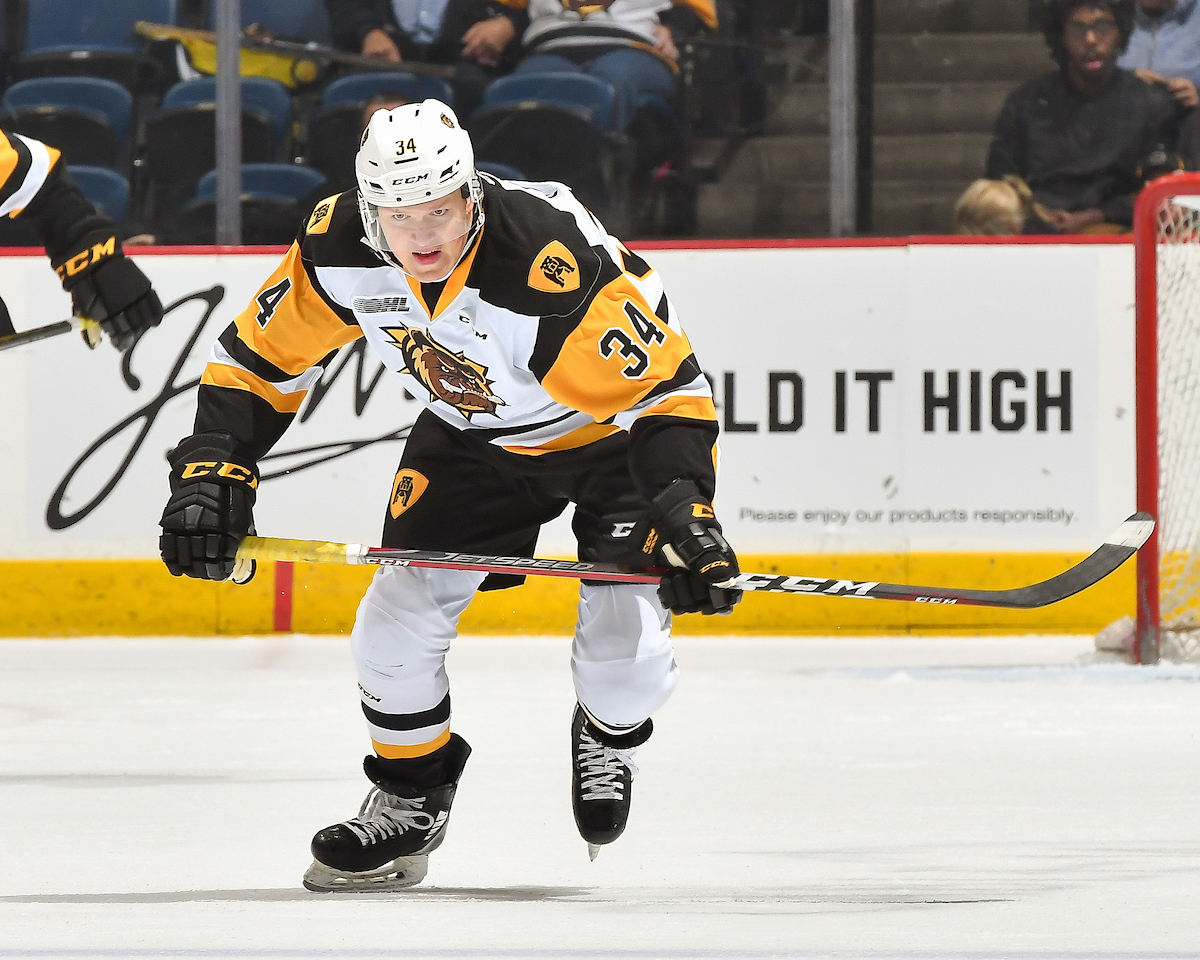
Arthur Kaliyev - LW - Hamilton Bulldogs
| Pros: | Cons: |
|---|---|
| ❏ Size | ❏ Engagement level without the puck |
| ❏ Shot and scoring ability | ❏ Two-way game |
| ❏ Hockey IQ in the offensive end | ❏ Average skating ability, especially start-ups |
| ❏ Strength on the puck |
Argument For: The list of CHL players to score 50 goals in this millennium in their U18 draft year is pretty small; Crosby, Tavares, Stamkos, Skinner, and Debrincat. All five of those were inside the top 21 in goal scoring in the NHL this past season, with Crosby’s 35 goals as the lowest of the bunch. With 50 goals this year for Hamilton, Kaliyev joined that group; a group with a zero percent failure rate as of yet in this millennium. The way Kaliyev scores goals translates to the NHL and he generates his own scoring chances just as well as he can finish off the ones created for him. In the offensive end, he is a dynamic player because of his size, skill level, and the way he processes the game. His playmaking ability made great strides this year, helping him to become a complete offensive player.
Argument Against: The consistency of Kaliyev’s engagement level without the puck does worry some scouts. Even though he is 6’2, he is not an extremely physical player and would not be considered a strong two-way presence. There are also concerns over the pace with which he plays. Not blessed with elite skating ability, Kaliyev relies on his size down low to muscle his way to the net, or to create space for him to utilize his shot. That space will not be as readily available to him at the pro level. There were similar concerns with former OHL player Michael Dal Colle in his draft year, and despite the high talent level, he’s had difficulty emerging as a full time NHL player as of yet.
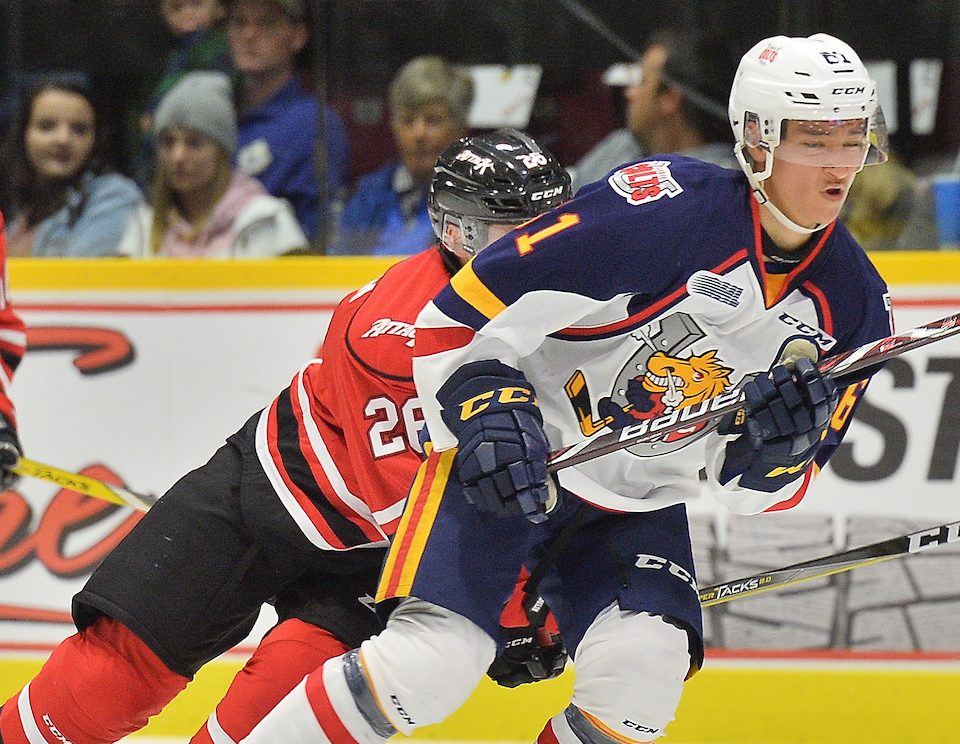
Ryan Suzuki - C - Barrie Colts
| Pros: | Cons: |
|---|---|
| ❏ Playmaking ability and vision with the puck | ❏ Pass first player to a fault who needs to shoot more |
| ❏ Creativity and skill with the puck | ❏ Ability to play through traffic and attack the middle of the ice |
| ❏ Ability to play with pace because of a smooth skating stride | ❏ Strength on the puck |
| ❏ Hockey IQ in all three zones | ❏ Consistency away from the puck |
Argument For: The brother of Montreal Canadiens prospect (and OHL playoffs MVP) Nick Suzuki, Ryan is equally skilled as a playmaker. His vision with the puck is among the greatest of any center in this draft. Suzuki possesses an extremely high upside because of his creativity, skill level and ability to create scoring chances with his hands. Suzuki did struggle in the second half of the season, but that was after Barrie had suffered some injuries and dealt away some top players, leaving Suzuki to be the focal point of defensive pressure.
Argument Against: As just mentioned, Suzuki did struggle mightily in the second half of the OHL season. He also struggled (partially due to injury) at this year’s IIHF U18’s. While he is a quality playmaker, he can be neutralized too easily because he is a one-dimensional pass first player at this time. Suzuki will need to develop a greater intensity level with the puck, looking to play through traffic rather than staying on the periphery. He will also need to improve his confidence in his shooting ability to stop defenders from taking away his passing lanes. At even strength, Suzuki’s production just was not great enough, considering his talent level (tied for 5th in the OHL among first time draft eligible players with two others).
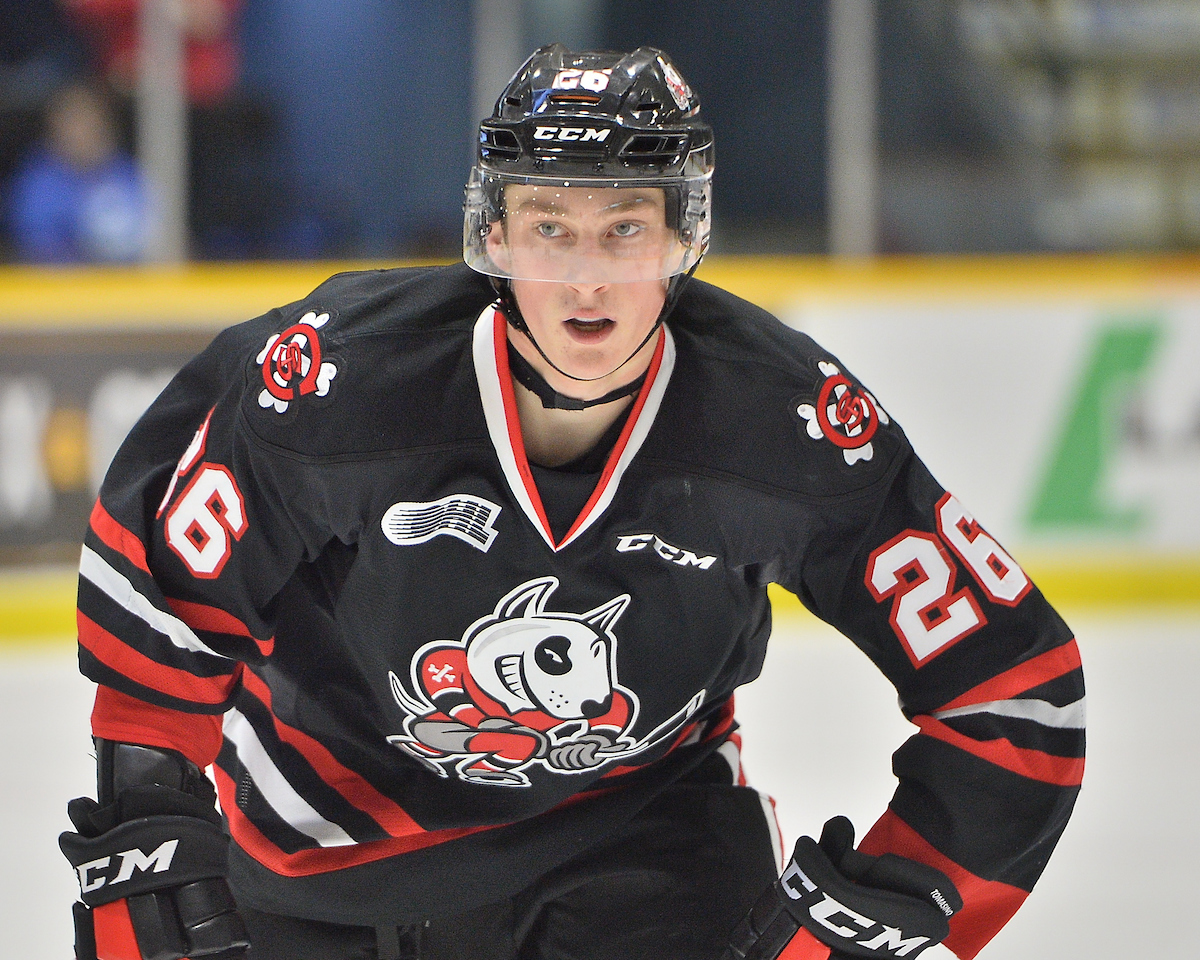
Philip Tomasino - RW/C - Niagara IceDogs
| Pros: | Cons: |
|---|---|
| ❏ Elite acceleration and first step quickness | ❏ Strength on the puck |
| ❏ High end motor and forechecking ability | ❏ Consistency of his two-way game |
| ❏ Skill with the puck in transition | ❏ Can force plays in the offensive zone and be turnover prone |
| ❏ Hands in tight | Weight and velocity of his shot |
| ❏ Playmaking ability and vision with the puck |
Argument For: Even strength production was among the best of any draft eligible player in the CHL this year. His 30 goals 5 on 5 were second only to Nathan Legare of the QMJHL. Despite a fluctuating role on a deep Niagara team, Tomasino was a consistent point producer. He loves to play at a quick tempo and is always looking to be aggressive in attacking the net. In the offensive end, he is also a true puck hound who can force turnovers and help to establish offensive zone time for his team. Matching his high energy level are his hands, which are very good and allow him to succeed in traffic despite not being the most physically mature.
Argument Against: Tomasino can, at times, force plays in the offensive zone leading to turnovers. He needs to exhibit more poise and patience with the puck, using his quick feet and puck skill to keep plays alive longer. Adding strength would help him to be more difficult to separate from the puck and cut down on those turnovers too. There are also some that do not see high-end upside because he may not stick down the middle. They believe that his energy and skill set make him a more likely third line winger.
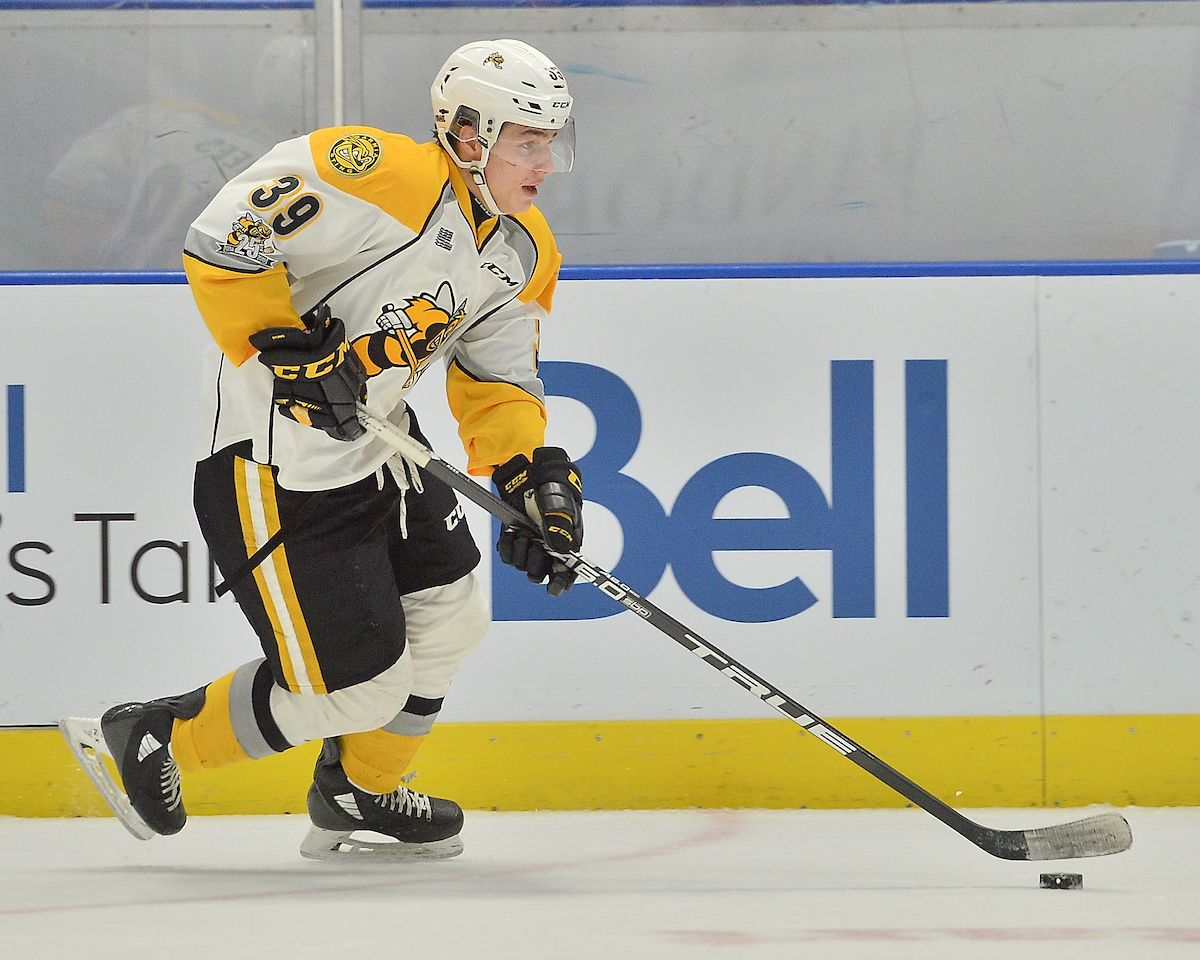
Jamieson Rees - LW/C - Sarnia Sting
| Pros: | Cons: |
|---|---|
| ❏ High end skating ability, especially top end speed | ❏ Size |
| ❏ Physicality and tenaciousness | ❏ Durability |
| ❏ Competes consistently in all three zones | ❏ Lack of discipline |
| ❏ Playmaking ability and creativity with the puck | ❏ Consistency in offensive production |
| ❏ Shot release |
Argument For: The IIHF U18’s were a coming out party for Rees, finally healthy enough to show off what he is fully capable of. He can be an impact player because of his well-rounded game and his speed. He can alter the game with a big hit. A big penalty kill. A big goal. You get the jist. His energy level is infectious, and it will make him a fan favourite for whatever team ends up drafting him. But Rees is also a very skilled player with the puck who possesses top 6 upside.
Argument Against: Considering his lack of elite size (5’10) and the way he plays the game, there are definitely durability concerns moving forward. He has already had major injuries (ankle and kidney) in his first two years in the OHL. He will also need to find a way to toe the line more effectively, as he can get himself in penalty trouble. If he is forced to alter his game, would he be as effective offensively? Scouts had similar concerns with St. Louis Blues forward Robby Fabbri in his draft year, and he has had trouble staying in the lineup due to injuries and lack of production.
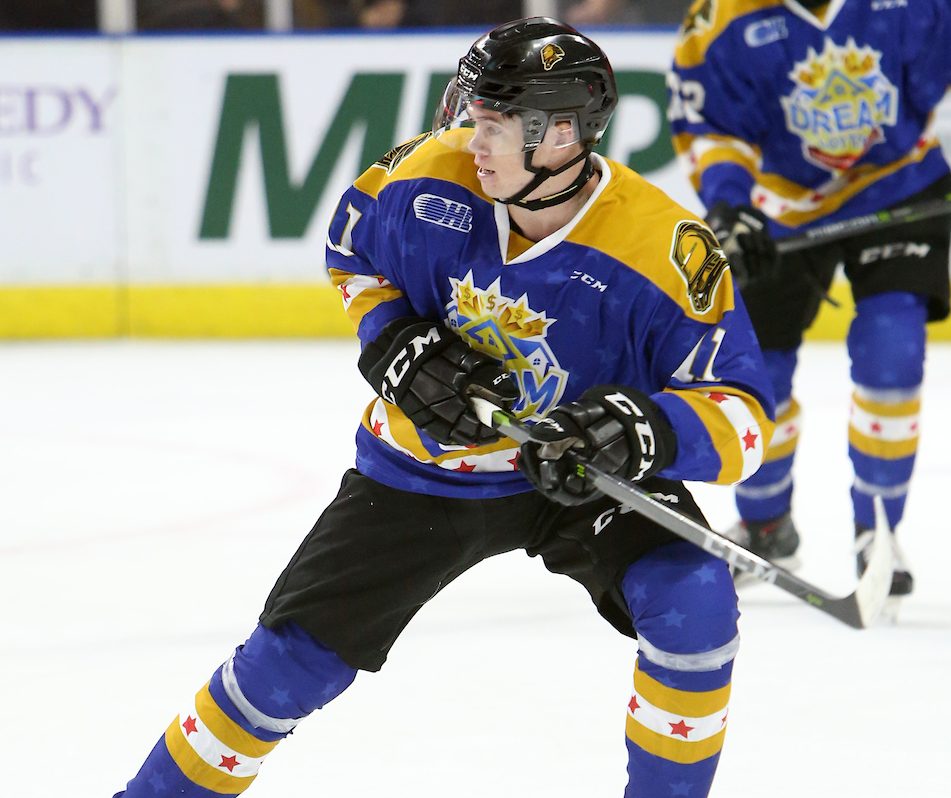
Connor McMichael - C/LW - London Knights
| Pros: | Cons: |
|---|---|
| ❏ Hockey sense in all three zones | ❏ Skill level with the puck |
| ❏ Skating ability | ❏ Consistency of physicality |
| ❏ Heavy shot | ❏ Concerns over long term projection at center |
| ❏ Effectiveness without the puck | ❏ Can disappear from shift to shift |
| ❏ Faceoff ability |
Argument For: McMichael is one of those quietly effective offensive players. His production is consistent even if he is not always the most noticeable player. His 5-on-5 production this year, however, was top notch, leading OHL draft eligibles in primary assists. That speaks volumes about his high-end hockey sense and overall effectiveness in any situation. When you combine his IQ with high-end skating ability, you have someone who is able to be one step ahead of the opposition when on the ice. There is also a lot of faith in the London Knights’ program and their ability to develop NHL players.
Argument Against: Sometimes players like McMichael can be difficult for scouts to assess. He has a tendency to disappear from shift to shift and does not make a consistent impact with the puck on his stick. Like Tomasino, is there elite upside here? There are questions as to whether he can be more than just a third line player at the NHL level. There are also questions as to whether he can stick down the middle, as his skill set (with his goal scoring ability and effectiveness away from the puck) may be better suited for the wing.
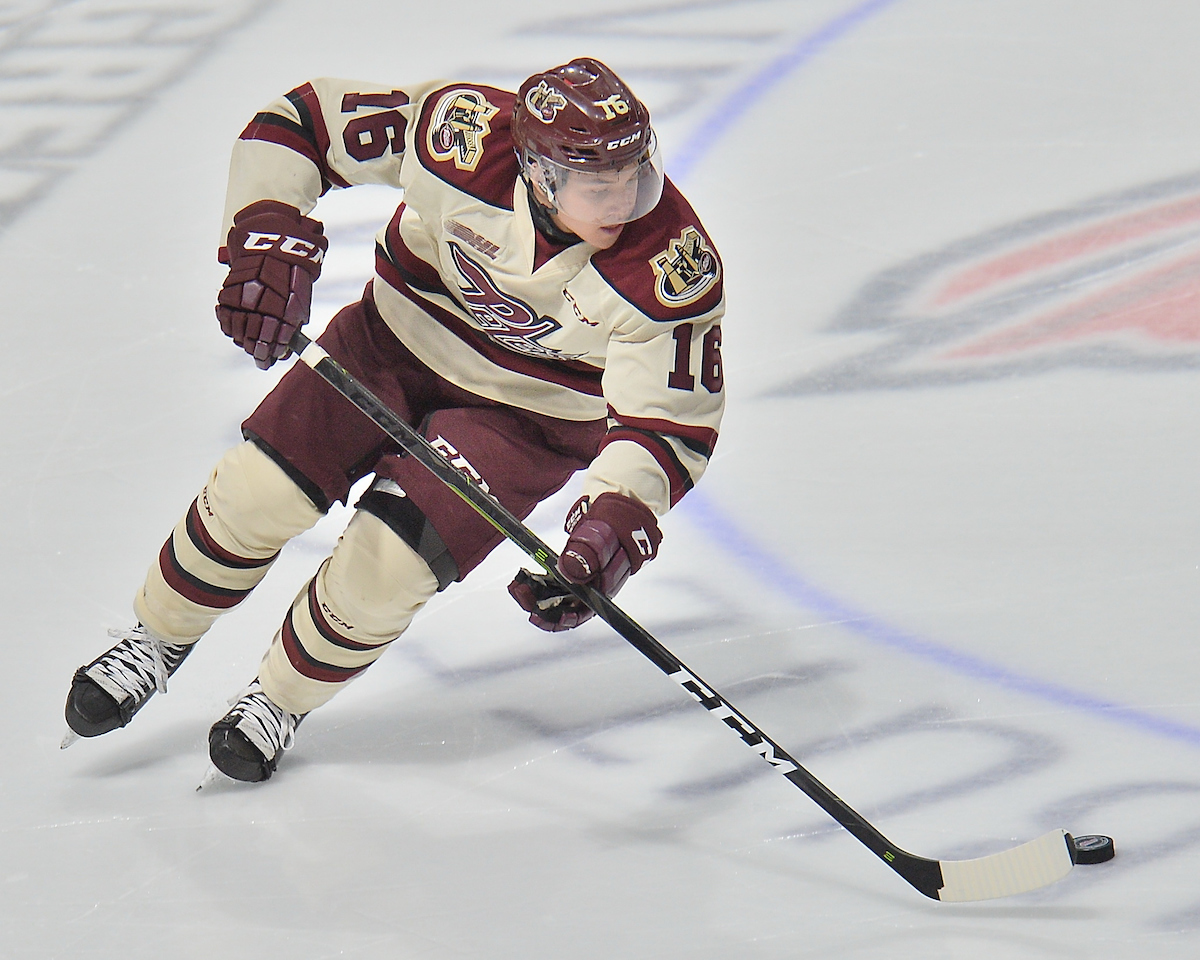
Nick Robertson - LW - Peterborough Petes
| Pros: | Cons: |
|---|---|
| ❏ Creativity with the puck | ❏ Size |
| ❏ Edgework and agility | ❏ Top end speed and acceleration |
| ❏ Vision and playmaking ability | ❏ Physically immature |
| ❏ Shot release | ❏ Defensive zone awareness |
Argument For: As he has shown when competing against his peers (Hlinka/Gretzky Cup, Top Prospect’s Game), Robertson is one of the more individually skilled players in the age group. With his puck skill and great agility, Robertson is very elusive and tough to pin down. He will often draw mulitiple defenders but possesses the vision and patience to dish off and create scoring chances for his linemates when those lanes open up. And even though it is mentioned as a ‘con’, Robertson’s physical immaturity may actually be something scouts view as a positive. He is one of the youngest players available this year (born September 11), so he very well could still grow and become an even more dominant offensive player thanks to added size.
Argument Against: While Robertson’s lateral mobility is excellent, his explosiveness and top end speed are not as elite as you would like to see from an undersized forward. As he advances up to higher levels, he may have difficulty creating that space for himself should his skating not improve. Additionally, Robertson could be classified as a one-dimensional player who needs to work on his play in his own end. He is the ultimate boom or bust player this year, who will likely be either a top six scoring forward or not an NHL player.
In Conclusion
Even if the OHL is in the midst of a down year at the draft, there are still some very talented players available to be selected by NHL teams. Which of these forwards goes first remains to be seen.
With the premium put on goal scoring in today’s NHL, one would think that Arthur Kaliyev has the best chance of being a lottery selection in this group. He is, at least in my opinion, a more well-rounded offensive player than Owen Tippett, who went 10th overall in 2017.
That said, Suzuki, Tomasino, Rees, McMichael, and Robertson all possess attributes that NHL scouts will find attractive. Even if no OHL forward gets selected inside the top 15, but six go from 16-31, that has to be considered a success. Either way, we will find out in June.































